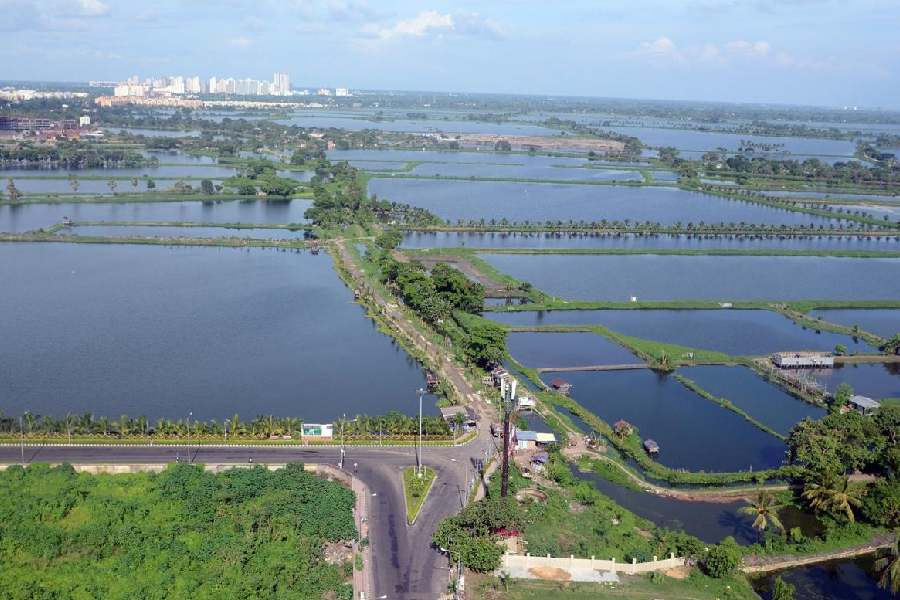At the time of independence, West Bengal accounted for a fourth of India's total industrial production. By 1995-96, the state's share had come down to 4.1 per cent. In 1985-86, West Bengal accounted for 10 per cent of India's total foreign trade, which came down to
4 per cent in 1998-99. After Maharashtra, West Bengal is the second most indebted state, and has an extremely poor record of resource mobilization. Its per capita income has also steadily declined, placing West Bengal among the middle-income-group states. Despite a slight recovery, this stagnation shows no sign of abating.
A recent report, 'Industrial Revival in West Bengal', released by a group of the state's foremost economists, quashes the belief that labour problems are the primary cause of the state's industrial decline. In fact, the state has, and always had, one of the lowest incidence of strikes.
The report strongly advises against the pursuit of high-tech and capital-intensive heavy industries which are likely to benefit only Calcutta. Besides, the high-tech sector is relatively new to the state and investors would rather invest in ventures located in Bangalore or Hyderabad.
Sector of concern
This argument tends to see the information technology sector as one homogeneous whole - data-entry operators and software developers. But IT is a highly differentiated sector. In the Seventies, Calcutta was considered an ideal location for India's IT industry. After the exodus of some major industrial houses, IT-enabled services are again mushrooming rapidly in the state.
From low-value call centres to back-end IT applications and analytics, IT-enabled services have made the job market vibrant in India, even as recession benights the United States of America. The IT boom is fuelled by the trend to outsource business processes to cheaper locations such as Mexico, India and the Philippines by US and European companies. The market for outsourcing, it is estimated, will be an enormous $ 540 billion by 2004. This year, even an optimistic body like the National Association of Software and Service Companies has had to revise its estimate for the growth of IT-enabled services upwards to 70 per cent. India has a meagre 0.5 per cent of this mammoth market.
IT-enabled services have the potential to absorb much of the state's registered 5 million unemployed. Two integral components of the IT industry are high bandwidth connectivity and educated manpower. West Bengal can lead the country in this phenomenally high growth area.
Shaping up
The IT makeover in the state will acquire depth with the proposed software technology parks at Durgapur, Kharagpur and Siliguri; e-governance initiatives like the computerization of health, family welfare and rural development departments; office automation projects; community information centres and the tele-medicine link between hospitals in Calcutta and the districts.
The report emphasizes industrial growth through small units in which the state has certain advantages. This of course needs to go hand in hand with the development of infrastructure like roads, electricity and communication.
Land reforms, the increasing importance of panchayats and the seeping influence of market forces have been able to break the centuries-old stagnation in agriculture in the state. From the early Eighties, agriculture has been growing at a much faster rate than the national average.
The broad industrial strategy thus proposed needs to hinge on three critical priorities: infrastructure, IT and support for small-scale units. The government needs to tackle urban unemployment with IT-enabled services, and the downturn in the rural economy with small-scale industries. The model should be the broad-based and diversified industrial sectors in China or in the successful east Asian countries.
That is still some way off. 'Single window clearance' in West Bengal still means taking a 'no objection' certificate from 35 to 47 organizations starting with the local sanitary inspector. English must be introduced from kindergarten. Buddhadeb Bhattacharjee's slogan, 'Do it now', may be able to prompt the gigantic leap West Bengal has been waiting for.
 Friday, 04 July 2025
Friday, 04 July 2025









